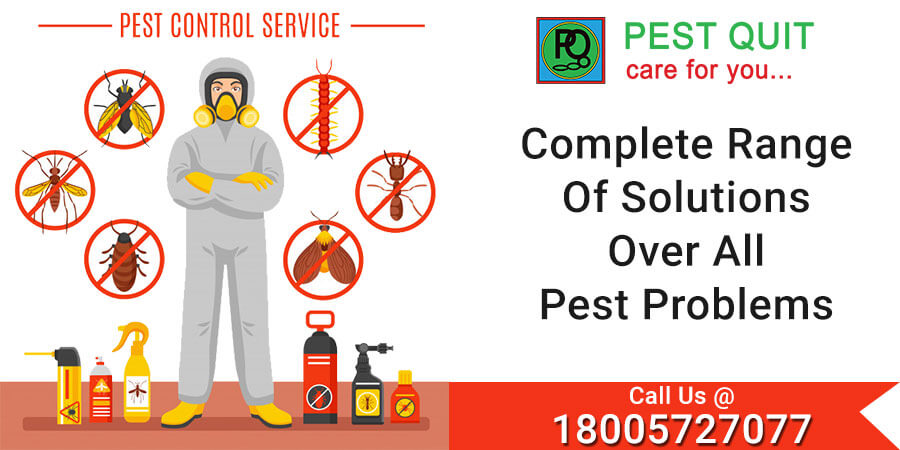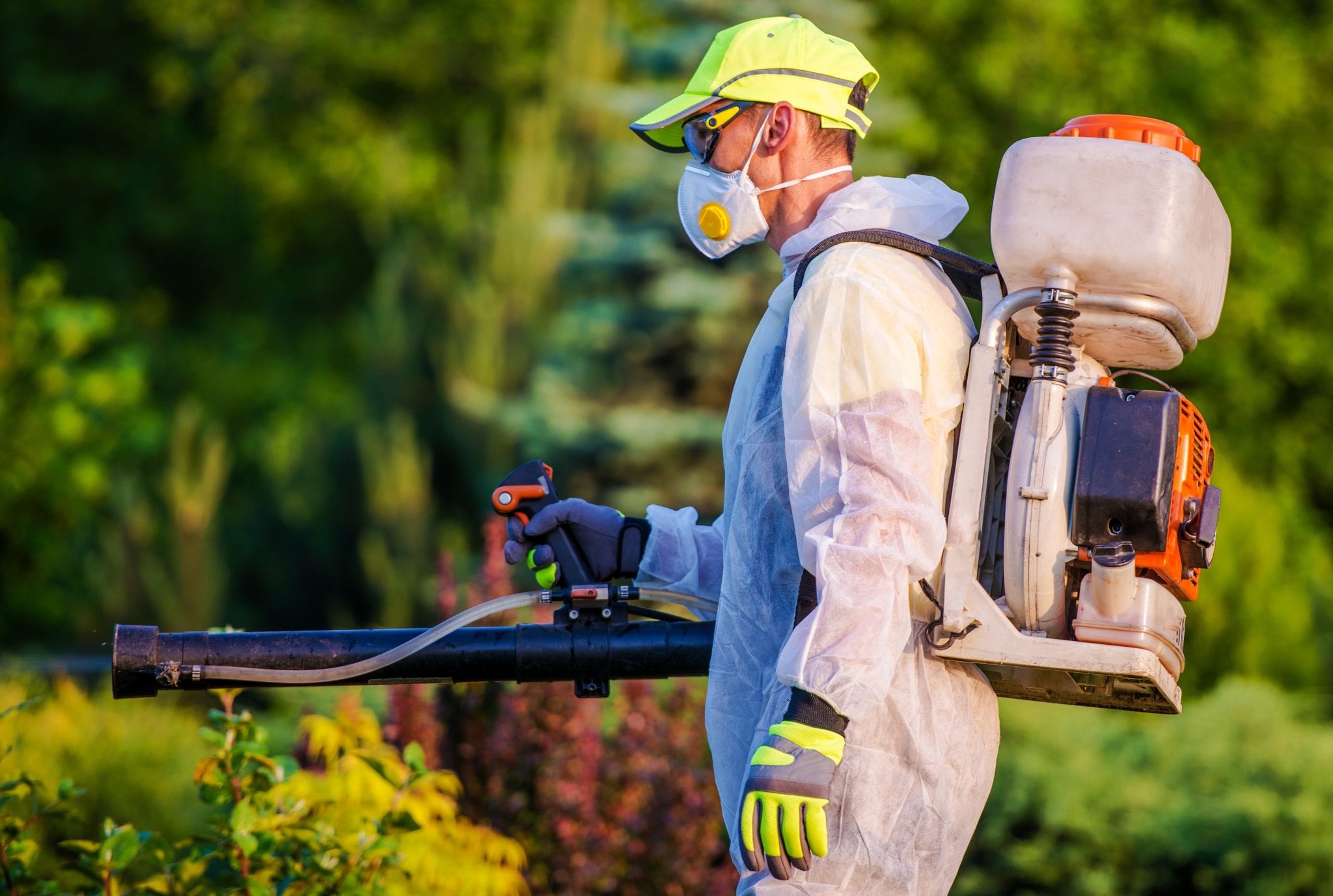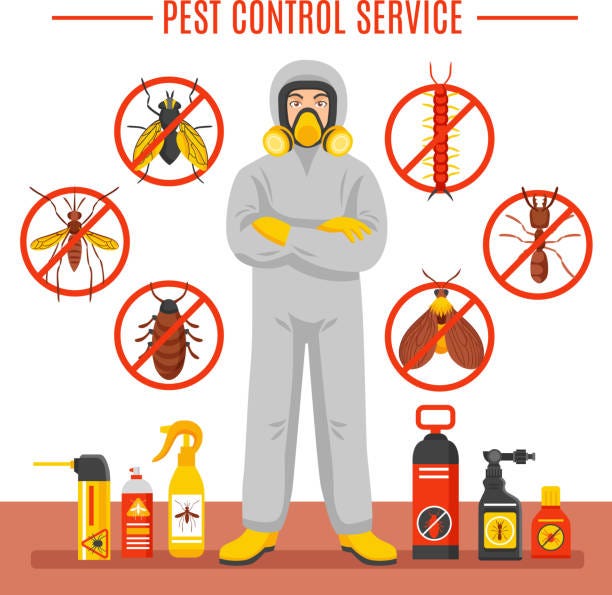Pest Control Visalia: Your Companion in Pest Monitoring
Pest Control Visalia: Your Companion in Pest Monitoring
Blog Article
Sorts Of Bug Control: Which Approach Is Right for Your Problem?
When encountered with a pest problem, the selection of a suitable technique for pest control is vital in efficiently managing the scenario. From chemical treatments to biological options, there exists a variety of techniques that can be used to deal with various types of insects. Each technique includes its own collection of factors to consider and advantages, making the decision-making process a nuanced one. Understanding the subtleties of each strategy and evaluating their compatibility with the details bug problem handy is crucial for achieving long-lasting success in parasite management. By discovering the various types of pest control approaches offered, people can make enlightened decisions tailored to their unique scenarios, guaranteeing a more sustainable and reliable outcome in insect elimination.

Chemical Bug Control
Chemical parasite control involves the use of artificial or normally derived chemicals to manage and eradicate pest populations properly. This method is generally utilized in farming, forestry, and domestic setups to deal with a vast variety of pests, consisting of rodents, bugs, and weeds. Making use of chemical pesticides can give fast and targeted solutions to pest infestations, making it a preferred selection for several individuals and services.
One of the essential advantages of chemical parasite control is its capacity to promptly get rid of parasites, lowering the risk of damage to plants, residential property, and human health - pest control visalia. By utilizing particular chemicals that target certain bugs, this approach can successfully regulate infestations while reducing injury to useful microorganisms and the environment when used appropriately
However, making use of chemical pest control additionally increases concerns about potential adverse impacts on non-target types, water resources, and human wellness. It is important to follow security standards, use chemicals sensibly, and take into consideration alternative insect control approaches to lessen these risks and make certain lasting insect management techniques.
Biological Bug Control
Biological insect control, likewise recognized as biocontrol, utilizes living organisms to manage and reduce pest populaces naturally. By using the bug's natural killers or microorganisms, organic parasite control uses a ecologically friendly and lasting solution to pest monitoring.
One typical instance of organic insect control is the use of ladybugs to manage aphid populations in yards. Ladybugs are natural predators of aphids and can aid maintain their numbers in check without the use of damaging chemicals. The germs Bacillus thuringiensis (Bt) is used as a biological insecticide to regulate caterpillar bugs while being risk-free for various other microorganisms.
Mechanical Parasite Control
Using manual and physical approaches to manage pest populations, mechanical insect control supplies an alternate technique that does not rely upon making use of living organisms or synthetic chemicals. This approach includes making use of obstacles, traps, or other devices to literally hinder or remove insects. By blocking parasite access points or establishing catches to capture this article them, mechanical pest control can effectively lower infestations without introducing chemicals into the atmosphere.
One common example of mechanical pest control is using mesh screens on doors and windows to avoid insects from entering structures. pest control visalia. This straightforward yet effective method acts as a physical barrier, maintaining bugs out while allowing for correct air flow. In addition, devices like mousetraps, fly swatters, and ultrasonic repellents fall under the mechanical parasite control classification

Physical Parasite Control
An efficient method to managing bug populaces without depending on chemical or organic methods involves making use of physical parasite control techniques. Physical pest control techniques aim to eliminate or prevent bugs via mechanical means instead of chemicals or chemicals. These methods are commonly favored for their eco-friendly nature and very review little influence on non-target organisms.
Some common physical bug control techniques consist of using obstacles such as screens or internet to stop pest entrance, catches to catch and remove pests, and hand-picking to literally remove pests from plants or structures. In addition, methods like heat therapies can be made use of to control bugs like bed insects by raising the temperature level to levels that are lethal to the bugs.
Physical bug control is specifically helpful in integrated parasite monitoring (IPM) strategies, where several parasite control approaches are integrated for efficient insect monitoring while reducing making use of chemicals. By making use of physical bug control strategies, people can successfully deal with parasite invasions with minimal environmental impact.
Integrated Parasite Monitoring
When applying physical insect control techniques as component of pest management approaches, Integrated Parasite Monitoring (IPM) emerges as a comprehensive approach that leverages various strategies to successfully manage pest populaces. IPM focuses on lasting avoidance of insects through a mix of biological, social, physical, and chemical devices customized to particular bug problems. By integrating multiple control strategies, IPM intends to lessen the threats related to parasites while likewise decreasing dependence on chemical solutions.

Final Thought
To conclude, figuring out the most effective method of bug control for your infestation relies on different aspects such as the sort of pest, the degree of the problem, and environmental considerations. Chemical insect control entails using chemicals, biological bug control uses all-natural killers, mechanical bug control involves physical obstacles, physical parasite control consists of trapping or removing parasites, and incorporated insect monitoring combines multiple techniques for an all natural strategy to pest control. Choose the approach that best suits your details situation.
By using the parasite's all-natural killers or microorganisms, organic insect control provides a eco pleasant and lasting remedy to pest monitoring.
Making use of manual and physical techniques to take care of pest populations, mechanical parasite control offers a different method that does not rely on the use of living microorganisms or synthetic chemicals.An effective technique to taking care of insect populaces without counting on chemical or biological techniques includes the use of physical insect control methods.When implementing physical bug control approaches as part of parasite monitoring approaches, Integrated Pest Administration (IPM) emerges as a comprehensive approach that leverages different strategies to properly regulate pest populations. Chemical parasite control includes the use of chemicals, organic insect control makes use of natural killers, mechanical bug control entails physical barriers, physical pest control includes capturing or getting rid of parasites, and incorporated bug management combines numerous techniques for a holistic technique to pest control.
Report this page